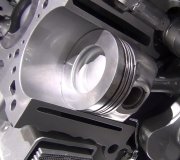Neither. Let your mechanic diagnose the cause properly. Replacing random parts is by far the most expensive and least effective way to diagnose a problem. No two sensors are ever exactly alike. Every time you replace one, the Engine Computer has to learn its characteristics, and it's not going to do that when a problem already exists. You will end up adding a whole bunch of new variables that the computer won't sort out. When it recognizes a sensor's signal value as unacceptable, it can "inject" an approximate signal to run on. That can cause the engine to appear to run better when in fact you made the list of problems worse. The typical result is a person will say the engine ran good for a day or two after replacing a part but now it's doing the same thing, so obviously that new part must be bad. In reality they never addressed the actual cause of the problem.
Your mechanic will connect a scanner to view live data to see what the computer is seeing and acting on. There may not even be a defective part. About half of all running problems are caused by wiring problems like corroded connector terminals and things like that.
If you want to try anything, swap the injectors between cylinder 3 and one other one, erase the fault code, then see if the misfire moves to that other cylinder. Sensors and the timing chain are going to affect all cylinders equally. You're looking for something that only affects one cylinder.
Tuesday, February 11th, 2014 AT 2:58 PM


